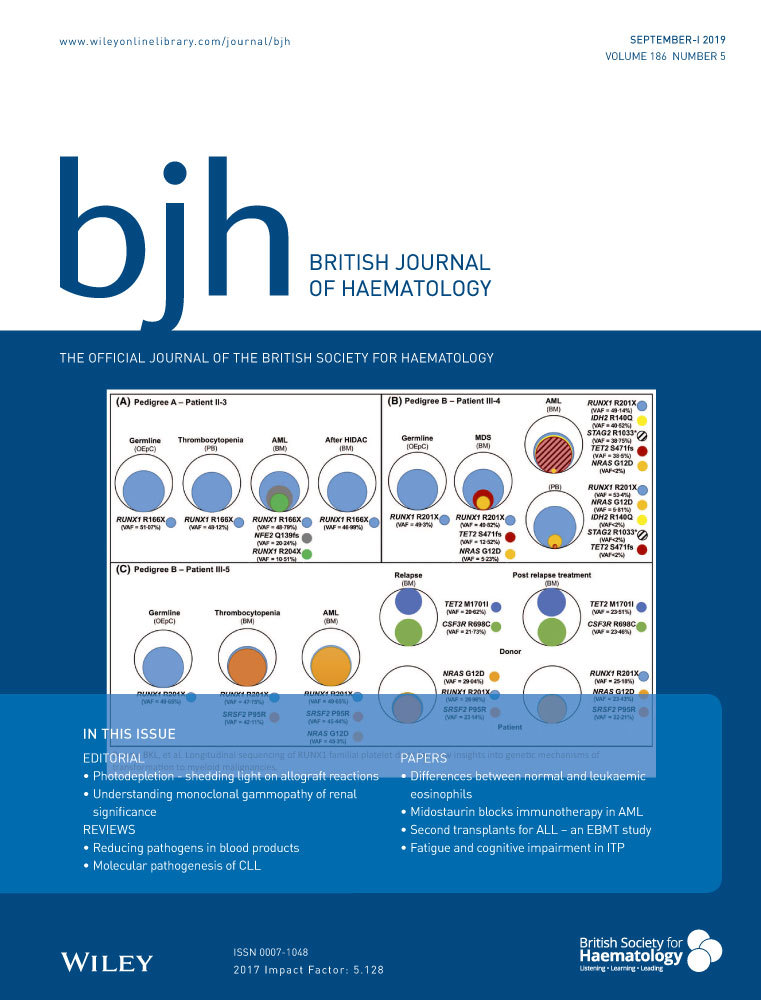NICE NG89 recommendations for extended pharmacological thromboprophylaxis – is it justified and is it cost effective: a rebuttal from the British Society for Haematology – response to Lester et al
In response to Lester et al, we outline why the duration of 7 days of pharmacological venous thromboembolism (VTE) prophylaxis is based on the published evidence; that this duration was shown to be cost-effective; and that the cost to the National Health Service of implementation of the guideline was calculated to fall within the thresholds set by the National Institute for Health and Care Excellence (NICE). We also highlight that a critical point in the pathway for VTE prophylaxis is risk assessment, in other words, working out who actually needs prophylaxis.
The National VTE Risk Assessment Tool (available from https://www.nice.org.uk/guidance/ng89/resources) has been embedded in practice since the last version of the guideline with a high level of adherence. However, several of the committee members for NICE Guideline 89 (NG89) believed that the tool leads to over prescribing of prophylaxis in medical patients without clear evidence of benefit. In effect, the tool has become a tick box exercise where clinicians view it as an unweighted checklist of risk factors. The committee discussed the crucial need for an appropriate risk tool that will effectively reduce the number of patients being given VTE prophylaxis when they are not at high risk of VTE. A review of all the published tools revealed that none offered clear guidance on how to balance VTE risk and bleeding risk. Consequently, the committee recommended that any published tool could be used and made a recommendation for research into this area.
Whatever tool is used, there should be a clinical review to make sure that the initial plans for VTE prophylaxis are appropriate and the guideline recommends reassessment at the next consultant review. The correct decision may not have been made initially and circumstances may change. If the balance of VTE risk and bleeding risk has changed, prophylaxis may not always need to be continued, for example if it transpires a patient does not have reduced immobility for 3 days.
While the evidence on who to give prophylaxis is unclear, the evidence on what to give and for how long was based on the included trials. This evidence has not changed much for the general medical population since the publication of the previous guidance (Clinical Guideline 92, CG92) in 2010 (NICE, 2010, available upon request from the corresponding author). Although no duration was specified in the CG92 recommendation, the duration of prophylaxis in the included trials for the general medical population ranged from 6 to 14 days, with an average duration of 10 days, and, for the general surgical population, the duration ranged from 6 to 11 days, with an average of 7 days. This continued to be the case in the recent guidance (NG89), where none of the included trials that informed the recommendations for the acutely ill medical patients had a duration of <6 days. There was no evidence that shorter courses of prophylaxis of <6 days are effective even though patients are being discharged from hospital earlier. For example, while acutely ill medical patients may go home after 2–3 days they still may be immobile and at risk of VTE. Thus, recommending prophylaxis for a shorter duration would not have been based on any evidence.
- The cost of district nurse visits for people unable to inject low molecular weight heparin (LMWH) was included in the model where 8% of people were estimated to require these visits (as opposed to 33% assumed by Lester et al). As explained in CG92 (NICE, 2010), this was based on two surveys, which both found that 8% of patients could not comply with administering their own LMWH prophylaxis (Spahn, 2002; Colwell et al, 2005).
- The average duration of prophylaxis used in the economic model was based on the trial evidence. As explained above, for general medical patients this was 10 days.
The results showed that for the general medical population, LMWH was the most cost effective prophylaxis under these assumptions. In fact, a threshold analysis run for the general medical population model also showed that, even if every patient required district nurse visits to deliver their prophylaxis, LMWH was still cost effective (NICE, 2010).
For the general surgery population, an average duration of 7 days was used in the economic model in CG92. This was also the case in a more recent economic analysis that followed the same methods as CG92 and informed the recommendation for the abdominal surgery (excluding bariatric surgery) in NG89 (Wade et al, 2015). This analysis found that LMWH for 7 days in combination with anti-embolism stockings was the most cost effective in this population.
- Include the cost of district nurse visits for only 8% of the target population rather than a third of patients, as proposed by Lester et al.
- Consider that some hospitals will use different risk assessment tools to the National tool [for example, using IMPROVE (https://www.outcomes-umassmed.org/improve/) and Caprini et al (2001)] risk assessment tools would classify fewer medical and surgical patients, respectively, as requiring prophylaxis.
- Consider the change in the definition of the target population to those who are ‘acutely ill’ rather than all ‘general’ medical patients.
Taking all the above into account will result in a lower cost impact estimate than calculated by Lester et al. However, it has to be noted that, in line with NICE methods, cost impact should not influence the committee’s recommendation in this particular case, given that both the clinical and economic evidence clearly show that LMWH given for this duration is both clinically- and cost-effective.
Author contributions
All authors contributed to writing the letter and were involved in the development of the NICE guideline.




